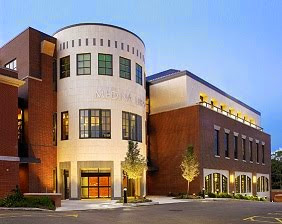 It is winter in Northeast Ohio and that means the flu is in full force.
It is winter in Northeast Ohio and that means the flu is in full force.Is it an epidemic?
According to Dictionary.com an epidemic is: "a temporary prevalence of a disease."
In the United States, the Center for Disease Control (CDC) decides if a disease has reached epidemic proportions.
On January 12th, the CDC declared that flu had reached epidemic level in the U.S.
 |
| Flu activity from the Center for Disease Control dated 20 January 2018. |
While a major inconvenience to many of us, the flu will prove fatal to some.
In today's Medina Gazette, the Medina Health Department said there have been 10 deaths due to the flu, so far this season.
Which leads us to epidemics of the past.
Most of us have wandered the rows in cemeteries and paused when we see family members who have all died around the same date. "What happened here?", we wonder.
Oftentimes, what has happened is an epidemic.
Epidemics have been around for millennia. This Wikipedia article traces epidemics back to the 5th century, B.C.
Since most of us cannot trace our ancestry back that far, today we will look at the epidemics that have plagued Medina County in the last 200 years.
MEDINA EPIDEMICS
1839-40
Dysentery - this is extreme diarrhea caused by eating contaminated food or water. Often caused by inadequate sanitary conditions around outdoor toilets.
1853-54
Dysentery
1852 - Small
Pox
1855 - Variolia *(Small Pox)
1843-44
Malignant Erysipelas* This disease afflicted Wadsworth Township people very hard.
1848 - Malignant Erysipelas*
1850 - Measles (from mortality
schedule)
1859 - Diptheria
1863-65 - Cerebro-spinal meningitis
1900-1915 –
Typhoid Mary - Luckily, Mary did not work or travel further east than New York. But hers is an interesting case to look at.
1916 -
Polio
1918-1919 - Spanish
Flu - Started during World War I and spread quickly by troop movements. Had a devastating impact on everyone.
Schools closed and businesses shut. Even the draft board suspended the draft until "the epidemic has been stamped out."
 |
| Medina Gazette article from 18 October 1918 showing three Medina soldiers deaths from Spanish Flu. |
1952 – Polio
1962-1965 –
Measles
Nowadays, an epidemic often results in the development of a vaccine. As this 1969 Gazette article shows, it can take years to create the cure.
Nowadays, an epidemic often results in the development of a vaccine. As this 1969 Gazette article shows, it can take years to create the cure.
 |
| Medina County Gazette 19 August 1969, page 2. |
1981-
Present – AIDS
1989-1991 -
Measles
2009 - H1N1 virus
2009 - H1N1 virus
*Variolia is another
name for small pox and erysipelas is a contagious skin infection.
Luckily, with modern sanitation and the use of antibiotics, many of the above listed diseases are things of the past.
SOURCES:
FLU MAPS Center for Disease Control
Ohio History Central
Cleveland Influenza
Cholera
History of Medina County and Ohio (1881)














